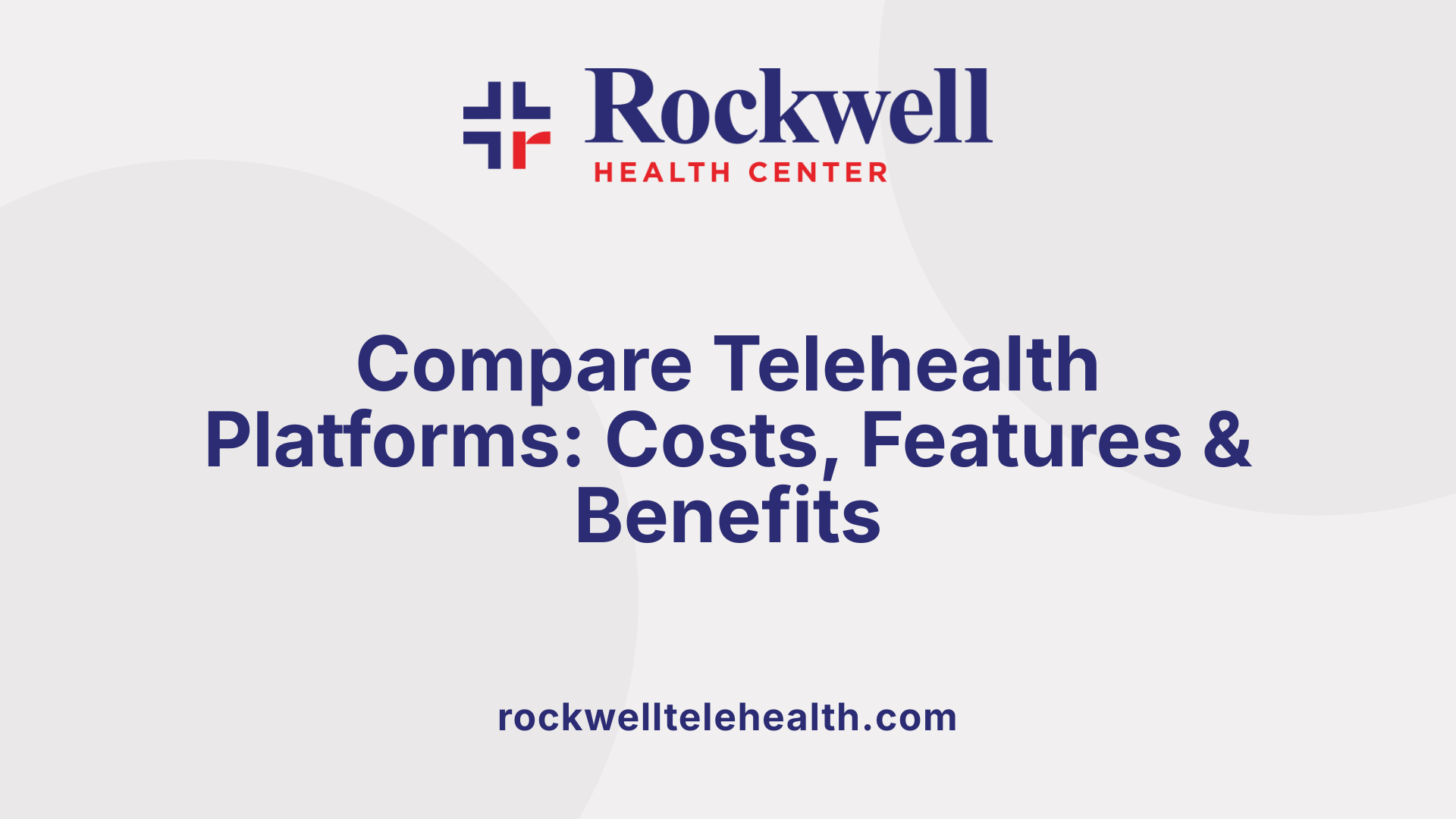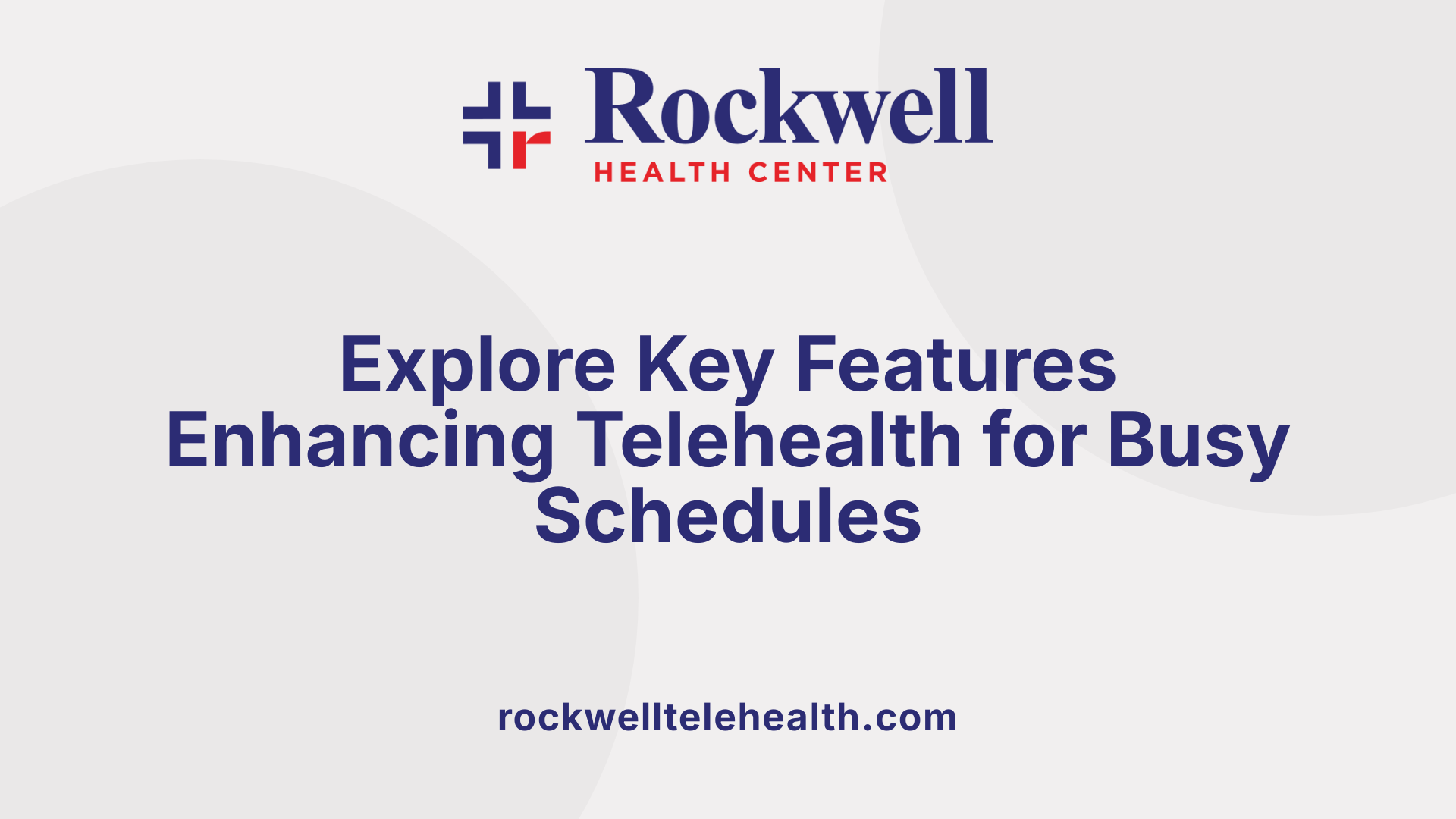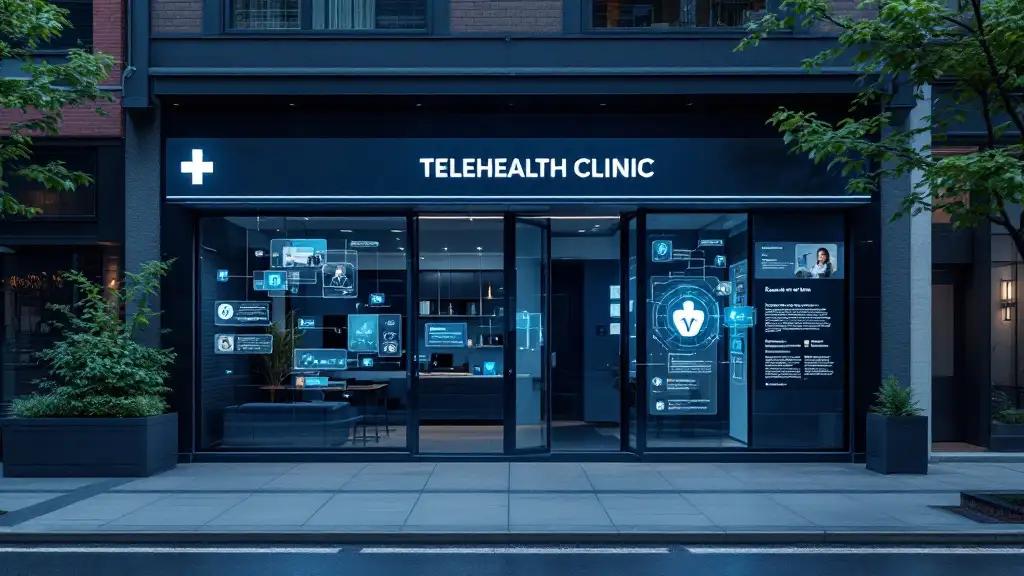Revolutionizing Access to Healthcare for Busy Professionals
In today's fast-paced world, busy professionals face significant challenges when it comes to managing their health. Traditional healthcare models often involve long waits, inconvenient appointments, and high costs, making it difficult for individuals with demanding schedules to prioritize their well-being. Thankfully, telehealth programs have emerged as a game-changer, offering accessible, scalable, and affordable healthcare options tailored to meet the needs of the modern professional. This article explores a variety of telehealth services designed specifically for busy individuals and families, highlighting their features, costs, benefits, and how to choose the right platform.
Affordable Telehealth Programs Tailored for Professionals

Overview of affordable telehealth platforms
For busy professionals, accessibility and affordability are crucial when choosing healthcare options. Several telehealth services stand out for their cost-effective solutions, flexible scheduling, and broad range of services.
Platforms like Amwell, Sesame, Nurx, Berry Street, Ro, Hims, Wisp, Curology, Maven Clinic, Innerwell, and Talkiatry offer programs designed to fit into hectic schedules. These services often include features such as HD video consultations, secure messaging, and patient management tools, supporting the seamless delivery of care.
Many of these platforms are built on scalable, cloud-based infrastructure, allowing them to adapt and grow with a business. They often integrate with electronic health records (EHRs) and analytics tools, providing comprehensive support for entrepreneurs and healthcare providers alike.
Self-pay and subscription-based options
Uninsured entrepreneurs benefit from a variety of payment options. Some platforms operate on a pay-per-visit basis, with services like Amazon One Medical charging $29 for messaging visits and $49 for video consultations. Others offer subscription plans, such as Amazon Prime members paying just $9 per month, which provides consistent access to virtual care.
For those seeking mental health support, platforms like Open Path Collective and Talkspace offer budget-friendly virtual therapy sessions that can significantly improve work-life balance. Teladoc Health also provides affordable access to urgent care, dermatology, and nutrition consultations, with prices around $89 per visit, and mental health services at $119 per session.
Cost comparisons to traditional care
Opting for telehealth can lead to substantial savings. Entrepreneurs might save up to $1,500 per visit compared to emergency room care, making it an economical choice for non-emergency needs.
Services without insurance typically streamline the process—users simply enter their details and choose self-pay options to receive care quickly. For example, Teladoc Health allows easy access to care without insurance, making it especially suitable for those who lack coverage.
| Platform | Service Type | Price Range | Notable Features |
|---|---|---|---|
| Teladoc Health | Urgent, Mental, Dermatology | $89-$119 per visit | 24/7 access, no insurance needed, easy sign-up |
| Amazon One Medical | Messaging, Video Visits | $29-$49 per visit | Straightforward process, insurance not required |
| Sesame | Urgent Care | Starting at $34 | Same-day visits, non-emergency focus |
| Hims, Ro, Wisp | Specialized treatments | Varies, transparent pricing | Focused services, flexible scheduling |
By choosing the right platform, busy entrepreneurs can access essential healthcare services efficiently and affordably. Whether that be through pay-per-visit schemes or subscription plans, telehealth provides a practical alternative to traditional care, especially for those managing tight schedules.
Features to Look for in Telehealth Platforms for a Hectic Schedule
When searching for a telehealth service that fits a busy lifestyle, certain features can make a significant difference in managing your health efficiently.
First and foremost, 24/7 availability is essential. Round-the-clock access to healthcare professionals allows you to seek assistance or advice whenever needed, without waiting for office hours.
Ease of use and seamless scheduling also contribute to a hassle-free experience. Platforms that offer intuitive interfaces, quick appointment booking, and quick response times help keep your healthcare routine simple and stress-free.
Remote monitoring capabilities are increasingly vital, especially for ongoing or chronic health conditions. Using connected wearable devices or home monitoring tools, these platforms enable continuous health tracking and more personalized care.
Security is paramount. Confidentiality and secure data sharing ensure your personal health information stays protected. Look for services that use encrypted communication and comply with healthcare privacy standards.
Lastly, integration with health apps and wearables can significantly enhance your health management. Compatibility with devices for activity tracking, sleep monitoring, or medication reminders streamlines your health data in one place, making it easier for healthcare providers to tailor your care.
Choosing a telehealth platform loaded with these features ensures that even the busiest individuals can stay connected to healthcare support efficiently, maintaining health without disrupting their daily routines.
Comparing Telehealth Platforms: Costs, Features, and Benefits

How do different telehealth platforms compare in terms of cost, features, and benefits?
Telehealth platforms vary widely based on their target users, functionalities, and pricing structures. For busy professionals, affordability and ease of use are crucial aspects when choosing a platform.
Affordable options like Doxy.me and SimplePractice offer straightforward, scalable solutions that focus on essential features like HD video consultations, secure messaging, and patient management. These platforms are ideal for small practices or individual entrepreneurs who need reliable communication tools without high costs.
In contrast, more comprehensive platforms such as Klara and athenaHealth provide integrated systems combining telehealth with electronic health records (EHR) and practice management capabilities. These are suited for larger practices or healthcare organizations that require extensive workflow integrations, often at a higher price point.
Specialized solutions like VSee and Caregility offer unique features such as low-code customization, group video calls, and inpatient remote monitoring. These are particularly beneficial for practices needing tailored workflows or hospital-based remote care.
Pricing models also differ. Some platforms, like Teladoc Health, charge per visit—approximately $89 for urgent care, nutrition, or dermatology, and $119 for mental health services. Others, such as BetterHelp through Teladoc, operate on subscription plans, providing ongoing therapy for around $60 to $100 per week.
Payments options are also tailored for uninsured entrepreneurs. For example, Amazon Medical’s pay-per-visit services start at $29 for messaging and $49 for video visits. Subscription-based plans, like Amazon Prime, offer mental health support at $9 per month.
Effective selection involves evaluating what features are essential—whether it’s high-quality video, modular workflows, or integration with existing systems—and balancing these needs against budget constraints.
| Platform Type | Typical Cost | Special Features | Suitable For |
|---|---|---|---|
| Doxy.me | Low (free or starting at $40/month) | Basic telehealth tools | Small practices, individual professionals |
| Teladoc Health | $89–$119 per visit | Urgent, mental, dermatology, nutrition | Patients without insurance, scalable care |
| BetterHelp (via Teladoc) | Approx. $60–$90/week | Unlimited therapy sessions | Mental health patients seeking ongoing support |
| Klara, AthenaHealth | Custom pricing | EHR integration, practice management | Larger healthcare organizations, practices |
| Amazon Medical | $29–49 per visit | Messaging, video visits | Uninsured entrepreneurs, budget-conscious users |
Choosing the right platform depends on your specific care delivery needs, budget, and whether you require simple communication tools or a comprehensive clinical system.
Advantages of Telehealth for Busy Individuals and Families

What are the advantages of telehealth solutions for busy individuals and families?
Telehealth services provide numerous benefits tailored to the needs of busy people and families. These platforms enable patients to access healthcare from the comfort of their own homes, saving valuable time that would otherwise be spent traveling to clinics and waiting for appointments. This convenience allows for more flexible scheduling, with many services offering online appointments, remote monitoring, and quick messaging options.
For busy professionals juggling work and personal commitments, telehealth facilitates easier management of chronic conditions and routine health check-ups without disrupting daily routines. Platforms like Amwell, Sesame, and Ro serve as examples, offering accessible virtual care that fits seamlessly into hectic lifestyles.
Moreover, telehealth greatly expands healthcare access for those living in rural or underserved regions. It bridges the gap by connecting patients with providers who might not be physically nearby, helping to address healthcare disparities. For instance, services such as Teladoc Health provide care without the need for in-person visits, including urgent care, mental health counseling, and specialty services.
During pandemic situations like COVID-19, telehealth became crucial in reducing the risk of infectious disease transmission. It allowed continuous health management while minimizing exposure risks, keeping patients safe but still able to receive necessary care.
Patient satisfaction and engagement tend to improve with telehealth solutions because they offer more control over care options and foster a more personalized healthcare experience. Overall, telehealth enhances health management, offers quick access to providers, and adapts to the fast-paced lives of individuals and families, making healthcare more accessible, efficient, and comfortable.
Selecting the Right Telehealth Service for Your Healthcare Needs
How can I select telehealth services that meet my healthcare needs within a busy schedule?
Choosing the ideal telehealth service requires careful consideration of your personal healthcare priorities and how the platform fits into your daily routine.
First, look for services that offer flexible scheduling options, including 24/7 availability and asynchronous features such as messaging or secure email consultations. These options allow you to attend to healthcare needs at times that suit your busy schedule.
Next, assess the usability of the platform. Opt for solutions that are compatible with your devices — smartphones, tablets, or computers — and have an intuitive interface. Features like secure messaging, patient portals, and remote monitoring can enhance your experience.
It’s also important to evaluate the breadth of available specialties and services. Platforms that provide access to a wide range of healthcare professionals— from primary care to mental health and specialty consultations — simplify the management of your health without needing to switch between multiple providers.
Data security and patient privacy are crucial. Ensure that the platform complies with regulations such as HIPAA, safeguarding your personal health information.
Ease of onboarding and quality of technical support can significantly impact your experience. Select providers that offer straightforward registration processes and accessible customer support to help resolve any technical issues quickly.
When researching options, use search queries like "Choosing telehealth services for busy lifestyles" to find tailored advice and reviews. Preparing your devices, ensuring a stable internet connection, and familiarizing yourself with the platform beforehand can help minimize technical difficulties.
Overall, the right telehealth service should seamlessly integrate into your routine, offering reliable, secure, and comprehensive healthcare that matches your specific needs.
Common Features in Telehealth Options for Busy Users

What features are common in telehealth options suitable for busy users?
Telehealth services designed for busy professionals typically incorporate several vital features that enhance accessibility and efficiency. One of the most prominent features is 24/7 availability. This ensures that users can access care whenever they need it, accommodating unpredictable schedules and urgent health concerns.
User-friendly interfaces are also standard, allowing quick and easy navigation without technical difficulties. These platforms simplify the process of booking appointments, communicating with healthcare providers, and managing health records.
Quick response times are crucial for users managing tight schedules. Telehealth platforms prioritize rapid connection to medical professionals through instant messaging or immediate video consultations, minimizing waiting periods.
Integrated care tools further support ongoing health management. These include functionalities like medication management, follow-up appointment scheduling, remote monitoring devices, and access to health resources. Such features enable a more comprehensive approach to health that adapts seamlessly into a busy lifestyle.
Personalization is another significant aspect. Technologies that tailor scheduling, communication preferences, and educational content to individual needs ensure that each user receives relevant, timely support. This personalization enhances engagement and promotes better health outcomes.
Security measures are essential, given the sensitive nature of health data. Robust encryption, secure messaging, and compliance with confidentiality regulations help build trust and protect user information.
Finally, effective communication methods—like HD video calls, secure messaging, and remote device integration—improve access and coordination between patients and providers. These features make it easier for busy individuals to receive quality care without sacrificing their daily responsibilities.
In summary, telehealth solutions for busy users combine around-the-clock availability, intuitive design, quick response capabilities, integrated care functionalities, personalized experiences, and secure communication channels. These features collectively support continuous, convenient, and trustworthy healthcare tailored to the needs of those with demanding schedules.
Scaling Telehealth: Infrastructure, Reimbursement, and Organizational Benefits

How do telehealth solutions benefit healthcare organizations, payers, and providers in terms of scalability and affordability?
Telehealth platforms are transforming healthcare delivery by offering scalable and cost-effective solutions that serve a wide range of users, including rural communities and busy professionals. Cloud-based solutions such as Doxy.me, SimplePractice, and Google Meet provide scalable infrastructure that can grow with the needs of a healthcare organization, enabling seamless expansion of services without extensive physical infrastructure.
Advanced data analytics and remote monitoring tools integrate with these platforms, allowing providers to track patient data continuously and manage treatments more efficiently. This integration not only enhances the quality of care but also reduces overhead and operational costs.
Reimbursement models have adapted to support telehealth, especially during the COVID-19 pandemic, with many payers now covering virtual visits at rates comparable to in-person visits. For instance, services like Teladoc Health offer affordable options—$89 for urgent care and dermatology visits, and $119 for mental health consultations—without insurance. Subscription plans, such as Amazon Prime's $9/month mental health services, offer additional affordability.
These financial adjustments lower costs for patients by reducing expenses related to transportation and time away from work, making healthcare more accessible. For providers, telehealth minimizes facility needs and allows effective management of high patient volumes through automated scheduling and remote diagnostics.
Overall, telehealth’s leverage of scalable infrastructure and supportive reimbursement policies creates a more inclusive and financially sustainable healthcare system. It benefits organizations by increasing reach and reducing costs, aligns payers' interests by controlling expenditures, and empowers providers to deliver timely, accessible care across diverse populations.
Making Telehealth Work for Your Busy Lifestyle
Incorporating telehealth into your healthcare routine offers a practical, efficient, and cost-effective way to prioritize health amidst a demanding schedule. With a range of platforms now providing features such as 24/7 access, seamless usability, and integrated care tools, busy professionals can enjoy personalized, continuous healthcare from the comfort of their homes or offices. By carefully selecting services based on your needs—considering costs, security, and convenience—you can ensure high-quality care without disrupting your daily routine. Embracing telehealth not only enhances individual health outcomes but also supports organizational growth across healthcare systems, making it an invaluable solution for modern, mobile lifestyles.
References
- 11 Telehealth Services Worth Trying in 2025
- Affordable Telehealth Platforms for Entrepreneurs
- Affordable Virtual Healthcare Without Insurance
- Telemedicine for healthcare: Capabilities, features, barriers ...
- Benefits of Telemedicine
- Telehealth: Technology meets health care
- Five key features telehealth patients want: Insights for ...
- 9 Most Popular Telehealth Platforms
























































































.png)